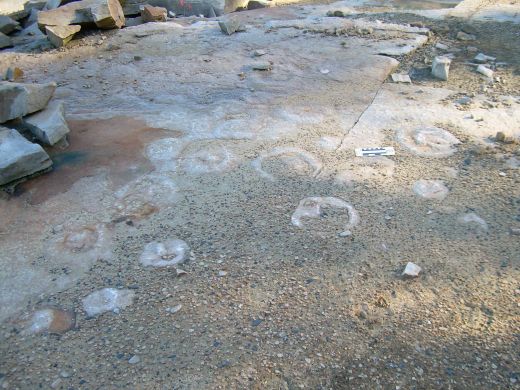
Research from the University of Tasmania has furthered our understanding of evolution by identifying the order of important trace elements critical to shaping life in the ancient oceans.
Dr Indrani Mukherjee, a postdoctoral fellow in Earth Sciences, and her colleagues tracked changing availability and scarcity of bio-essential elements in the past oceans and their influence on the evolution of life over three billion years.
The scientists analysed more than 8,000 pyrite grains from sedimentary rocks from around the globe for 25 different trace elements. Sedimentary pyrite is ideal for their study as it incorporates trace elements into its structure in a similar proportion to their concentration in past oceans.
The research has demonstrated that the oldest oceans were enriched in nickel, cobalt, copper and iron, and these nutrients became the building blocks for the first single-celled micro-organisms (prokaryotes).
“Around 1.8 billion years ago, the oceans witnessed the first striking variability in nutrient content, with zinc and molybdenum becoming more abundant and most other elements becoming depleted,” Dr Mukherjee said.
“We propose that this change was the catalyst for evolution of the first multicellular organisms (eukaryotes). Nutrient scarcity may have forced single-celled organisms to either adopt a symbiotic or predatory relationship; the consequences of which would be the first complex cell.”
Then, about one billion years ago, nutrients rose in the ocean in a ‘kangaroo hop’ fashion – a staggered increase of a multitude of elements. Cobalt, copper and iron came first, then zinc and nickel, followed by molybdenum, selenium, phosphorus and cadmium.
“Molybdenum, selenium and phosphorus reached a maximum precisely at the time of the Cambrian explosion of life 540 to 520 million years ago, when most major animal phyla appeared in the fossil record for the first time,” Dr Mukherjee said.
“This event is considered the most important event in the evolution of macroscopic life on Earth.”
Research team leader Professor Ross Large said the study was conducted using the facilities at the University’s .
“The key to this research is our world-leading laser laboratory and its scientists with laser expertise who enabled the high-precision analysis of minerals in sedimentary rocks,” Professor Large said.
“It is the trace element concentration of certain minerals – in this case, marine pyrite – that enables our research team to track the nutrient chemistry of the oceans through time. This is global breakthrough research first developed at the University of Tasmania.”
Dr Mukherjee is presenting this research at the on June 25.
Image: Stranded scyphozoans on a Cambrian tidal flat in Wisconsin. Credit Wikipedia Commons/K.C. Gass.






